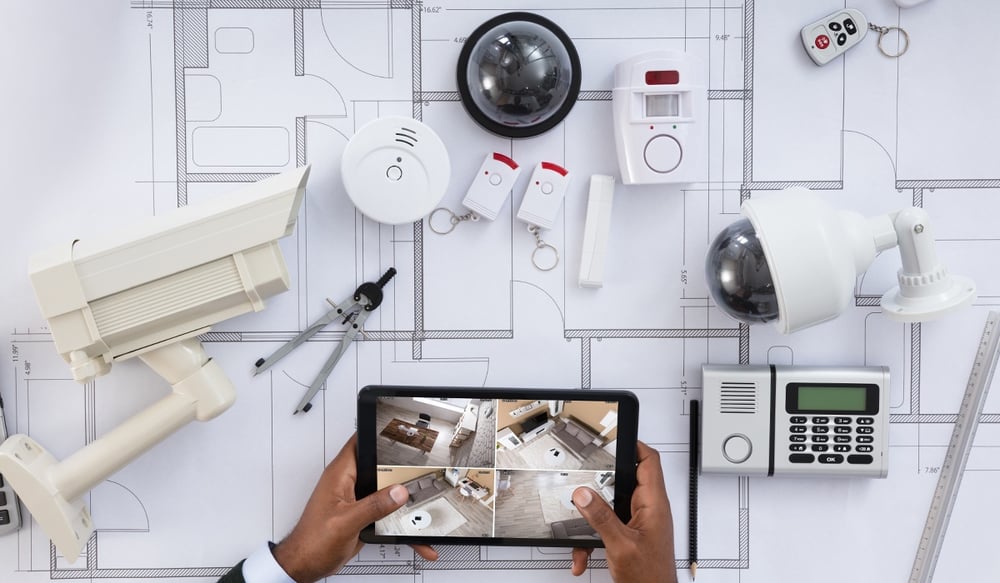How An Alarm System Works
Fire Alarm Systems Security Systems Dec 4, 2018 9:50:16 AM General Security 3 min read

Most people understand that an alarm system is a key safety measure to protect property and loved ones from threats. The way an alarm system does so is likely lesser known.
Alarm systems are typically comprised of a control panel, motion sensors and door contacts, glass breaks, and smoke and CO detectors—creating an integrated network to keep users safe.
Below are descriptions of different components and features an alarm system is composed of, including:
Control Panel
Think of the control panel as the main headquarters of an alarm system. It’s where users will manage the system as a whole, along with its many features.
For instance, the control panel can be used to:
- Arm or disarm the system with the keypad
- Utilize the panic button, which sends a signal to your security company's monitoring center and notifies them of the emergency
- Check to see what point(s) of entry in the home is open/closed
Motion Sensors & Door Contacts
A motion sensor’s purpose is to sense when there is motion in a particular room or area and signal this behavior via alarm. This type of device is supposed to be an unseen safety measure, which, when activated, quietly observes a space for any unexpected movement that could pose a threat to the people inside the building—whether a residential or commercial structure. Motion sensors can be installed by front and back doors and windows, as well as other areas in a building, such as the doors. In fact, some intrusion alarm systems come with door contacts, which sense when a door has actually been opened or closed.
Glass Break Sensors
Glass break sensors are similar to motion sensors, but focus on sound rather than movement. For example, if a burglar is trying to break into a home through one of the windows and breaks or cracks the glass in the process, the glass break sensor would identify such an occurrence and sound the alarm to notify the homeowner.
Smoke Detectors
A smoke detector can also be connected to an alarm system—for both commercial and residential spaces. Although it doesn’t scan for outside intruders, it does play a key role in keeping those inside of a building safe from inner threats. Smoke detectors monitor a building for any hints of smoke, and thus, a potential fire. If smoke is present, the detector is programmed to notify those inside the building via a beeping noise.
"Three of every five home fire deaths resulted from fires in homes with no smoke alarms or no working smoke alarms."
According to statistics shared by the National Fire Protection Association: From 2009 to 2013, which are the latest statistics available through the global nonprofit, “smoke alarms sounded in more than half (53%) of the home fires reported to U.S. fire departments. Three of every five home fire deaths resulted from fires in homes with no smoke alarms or no working smoke alarms.”
Such data not only signify how critical it is to have a smoke detector, but to ensure it’s installed and working properly.
Carbon Monoxide Detectors
Fire isn’t the only internal threat that could injure or claim the lives of those inside. Carbon monoxide (CO) is a silent killer devoid of taste, odor or color. Without a CO detector, there’s pretty much no way of knowing the gas is present until someone becomes affected by it. Similar to a smoke detector, a CO detector alerts people nearby that CO is present, as well as the security company’s monitoring center. Homeowners and business owners can even be notified of an emergency on their desktop computer, smartphone or tablet, if they aren’t on the premises, keeping them informed at all times.
CO detectors are deemed so important for safety that “27 states and the District of Columbia require carbon monoxide detectors in private dwellings via state statute,” explains the National Conference of State Legislatures (NCSL), a bipartisan resource for state legislators. These include California, Colorado, Florida Maryland, New York, Pennsylvania, Tennessee, Virginia and West Virginia. An additional 11 states “have promulgated regulations on CO detectors,” it adds.
You can see the full list on the NCSL’s official website. Each component and feature of an alarm system is essential in keeping people safe from a wide range of life-threatening events, including burglaries, fires and carbon monoxide poisoning. Just like any other device, if one isn’t functioning correctly or becomes disconnected, the entire system won't be as effective.
